When To Start Seeds Under Lights
When To Start Seeds Under Lights
Even as the March snows fall our customers are thinking about their summer gardens and are ready to start seeds. But not all seeds should be planted at the same time, and most who grow seedlings indoors will need some supplemental lighting to help the young plants stay strong. This week’s blog post will help you know when to plant seeds indoors and what type of lighting you’ll need. Here is a breakdown of when the most commonly started seeds can be sown on Cape Cod.
Indoors
Peppers and Perennials: Seeds can be sown now (second week in March). Best success will be achieved by using a seed-heat mat. Transplant these outdoors at the end of May or after night-time temperatures are reliably above 50 degrees.
Tomatoes, eggplant, basil, kale, chard: Third or fourth week in March. (Kale and chard can be transplanted outside in late April or early May after plants have been gradually introduced to outside growing conditions) Transplant tomatoes, eggplant and basil outside at the end of May or when night-time temperatures are reliably above 50 degrees.
Zinnias, Cosmos, Marigolds, and other annuals: Start in mid-April. Transplant outside at the end of May or first week of June.
Most other vegetable seeds such as winter squash, summer squash, cucumbers, chard, lettuce, beans, peas and all root crops get planted right in the ground. Because we have cool nights and cool soils until the beginning of June in this area, there isn’t anything gained by starting these seeds indoors and typically they will grow too large before it’s time to put them outside.
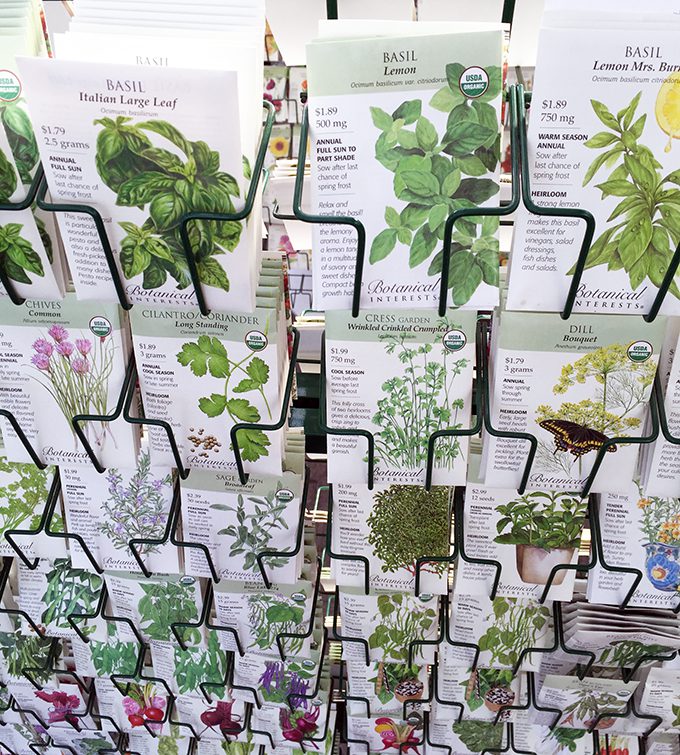
Seed packets have information on the backs that tell you when to start that type of seed, but indoors and out. This is good information – just remember that most summer flowers and vegetables get planted at the end of May in this area. The information about “weeks from last frost” isn’t as useful on Cape Cod because it isn’t a frost that is likely to kill the young plants in this area, but night time temperatures that are in the 40’s.
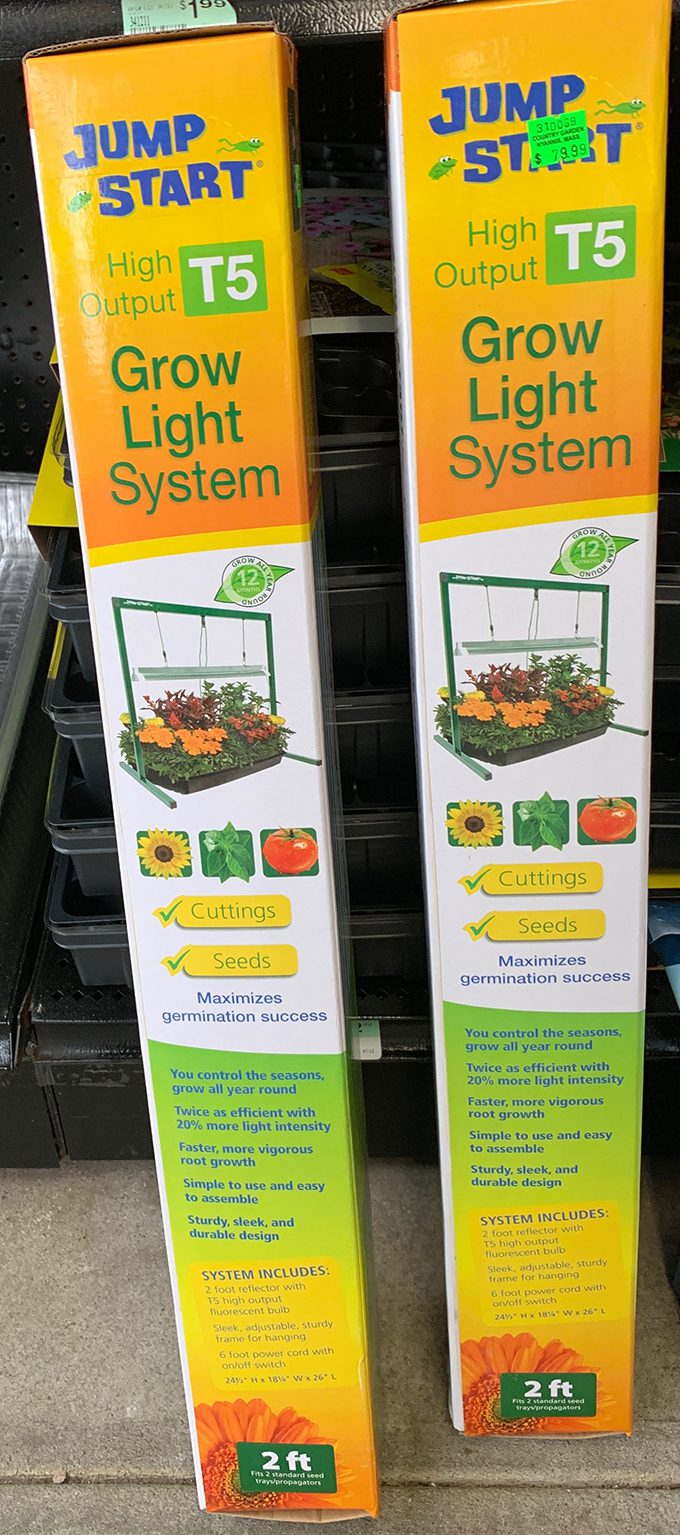
This type of grow light is probably most useful for home seed-starters because it has a rack that holds the lights and a means of raising those lights as the plants grow.
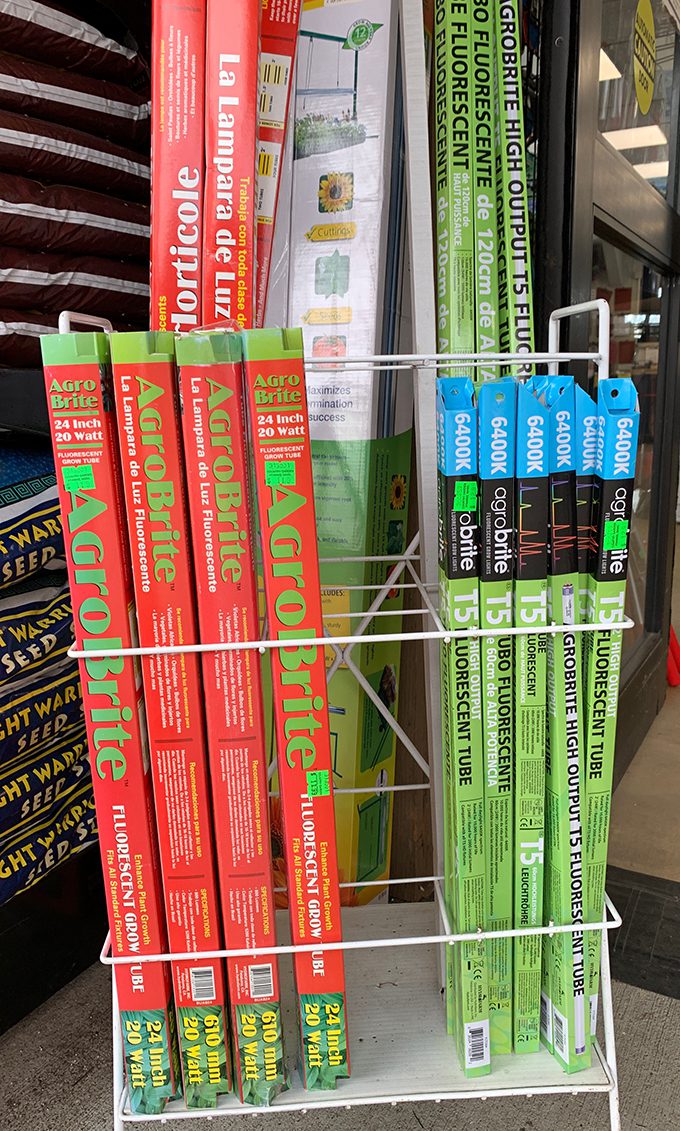
We also stock grow light bulbs for those who already have a system of support or light fixtures.
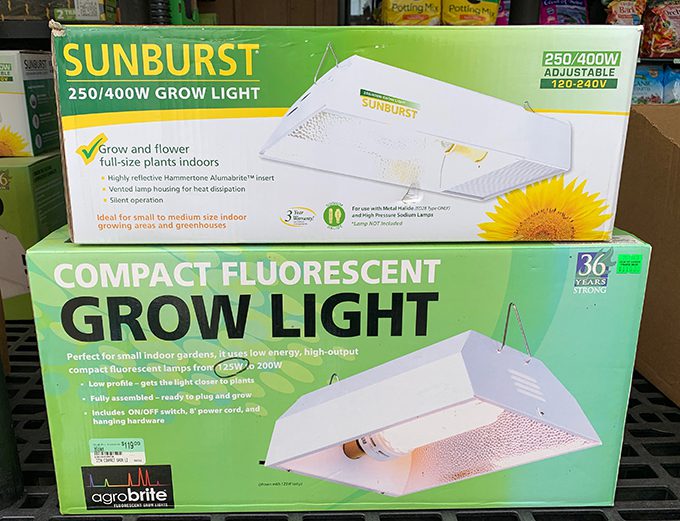
These lights are for those who are seriously growing many plants indoors over long periods of time. They are stronger than the other bulbs we carry.
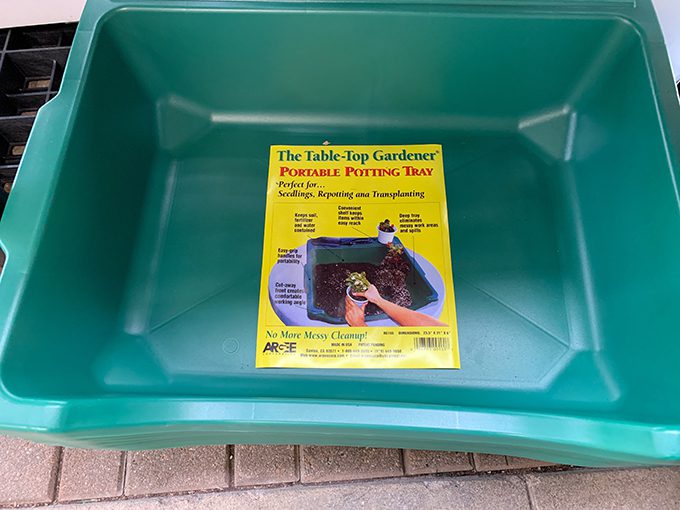
OK…this bin has nothing to do with lights. I just think it’s a great idea! Useful for those who are potting or repotting plants on their kitchen table. You can use it at this time of year for getting your seed starting mix moist before you put it in the pots, and then use it to contain the mess when you’re repotting houseplants.
About Growing Seedlings Under Lights:
- Keep fluorescent grow lights about 3 or 4 inches from the top of the plants. Raise the lights (or lower the shelf with the plants on it) as the plants grow.
- Put the lights on a timer so that they are on 14 hours a day. You’re aiming to convince the plants that it’s the beginning of June!
- A fan on a timer is also useful when growing seedlings indoors. This adds air circulation and mimics the wind that the young plants will face once they are placed outside. Seedlings that have been blown by a fan when growing indoors are stronger than those that haven’t been stimulated/stressed in that way. A fan also helps the surface of the seed starting mix dry a bit so the plants are less prone to “damping off,” which is a fungal condition that causes young seedlings to collapse and die.
- Some people like to put their seeds on a plate between wet paper towels in order to be sure they have germinated before planting them (gently!) in potting mix. Others place seeds right in the moist potting mix and cover the pots with clear plastic wrap until the seeds germinate. In either case, the uptake of water by dry seed is called imbibition and this triggers germination.
- Once your seedlings start to grow, water the young plants only when the soil starts to look and feel dry. Do not keep the plants too wet as they are more prone to rot when the surface of the seed mix is constantly damp.
Note: If seed starting sounds like too much for you, we will be fully stocked with young plants that are already started later in the spring. And if you have any questions about your seedlings, come into the store for a chat!
Subscribe To Our Newsletter
Sign up for our weekly email about sales and events.
